International Journal of Electrical and Electronics Research ISSN 2348-6988 (online) Vol. 9, Issue 2, pp: (9-18), Month: April - June 2021, Available at: www.researchpublish.com
ANALYSING AND IMPROVING EFFICIENCY OF PRODUCTION IN MANUFACTURING INDUSTRIS USING DEEP LEARING
1Umadevi Sureshpandian,2
Reshma Jebastina Suresh, 3Maria Christina Blessy,M.E.,1Electronics and Communication engineering, St. Joseph‘s Instittute of Technology, Chennai, India
2Electronics and Communication engineering, St. Joseph‘s Instittute of Technology, Chennai, India
3Electronics and Communication engineering, St. Joseph‘s Instittute of Technology, Chennai, India
Abstract: India has been in a race for the past two and a half centuries but unfortunately it has been a race to the bottom. Most people think that the manufacturing industry is like the services or the Agri-industry; each industry having its own relative advantages and features. What is not clear to most is that the manufacturing-led economies are unique in being more egalitarian in their distribution of wealth. Secondly, manufacturing led economies are also much more resilient than economies that are led by other industries. Finally, the more importantly relevant for India, the manufacturing industry in India creates more employment opportunities with its growth than any other sector. Insight our research shows us is that manufacturing led economies are much more resilient and robust. And one of the major criteria to consider is the manufacturing the goods and delivering it at proper lead time. To achieve the tracking of goods production and it’s on time delivery is required to be taken care. For that technology needs to be integrated with the manufacturing leading to its tremendous improvement. In this project we propose a system to automatically track and trace each step of manufacturing and the time taken incompletion of each step. If the threshold time limit exceeds for any step in the process, then an automatic mail will be sent to the manufacturer to automatically take steps for the process to complete on time. This is achieved by implementing object tracking methodology in industries.
Keywords: manufacturing industry, employment opportunities, economies.
I. INTRODUCTION
A manufacturing process is the way a business will establish how it will produce its products for its customers. Manufacturing process requirements are been completed by operations personnel. Requirements of the facilities and processes and associated costs are been identified to enable building production units according to the requirements of volume, time, and safety. Manufacturing process is the steps through which raw materials are been transformed into a final product. The manufacturing process begins with the product design, and materials specification from which the product is been manufactured and these materials are then modified through manufacturing processes to become the required part. The manufacturing sector is been closely connected with engineering and industrial design. Production planning and control is a predetermined process that plans, manages and controls the allocation of human resource, raw material, and machinery to achieve maximum efficiency. A production line is a traditional method, which people associate with manufacturing. The production line is been arranged so that the product is moved sequentially along the line and stops at work centers along the line where an operation is performed. The item may move along some kind of conveyor, or be moved manually by staff. For example, operations along the production line could include assembly, painting, drying, testing, and packaging.
International Journal of Electrical and Electronics Research ISSN 2348-6988 (online) Vol. 9, Issue 2, pp: (9-18), Month: April - June 2021, Available at: www.researchpublish.com
Loss of production speed is an unavoidable reality for process manufacturers. Reduced production speeds show to consume 9–15% of available production capacity in various production contexts and create substantial costs for capital-intensive process industries. Amongst the least examined of the six big efficiency losses measured within total productive maintenance, speed loss presents significant opportunities for potential efficiency improvements in manufacturing companies. Based on the literature, this paper presents a framework of the factors related to speed loss, including three overall dimensions: technology factors, human factors and product factor.
The importance of producing products without time delay is huge. We are living in a country where there is over population which means demand in every commodity, we can‘t compromise someone‘s daily livelihood for some mistake happened in manufacturing industry that‘s why we proposed this paper in order to eliminate the delay in the manufacturing industries.
By using deep learning we‘ll check for time delay in each station of the manufacturing industries, if there is any time delay occurring in the stations, then it would generate an e-mail to the manufacturer, mentioning that in the station x the work has been exceeded than the time limit. Knowing this the manufacturer will take actions accordingly in that station. By doing this we can eliminate time delay, can identify which station haven‘t produced the products on time.
II. PROPOSED SYSTEM
A. Introduction
In this project, we are going to develop a novel architecture which will be used for increasing the efficiency of the manufacturing industries by using deep leaning -Mobile-Net algorithm which is considered to be the best of all algorithm used to detect the object. Eventually we can eliminate the time delay occurring the industry.
B. System architecture
The below Architecture gives a detail description from how an object is been given as data to system to setting threshold time for that object. Fig. 1 System architecture
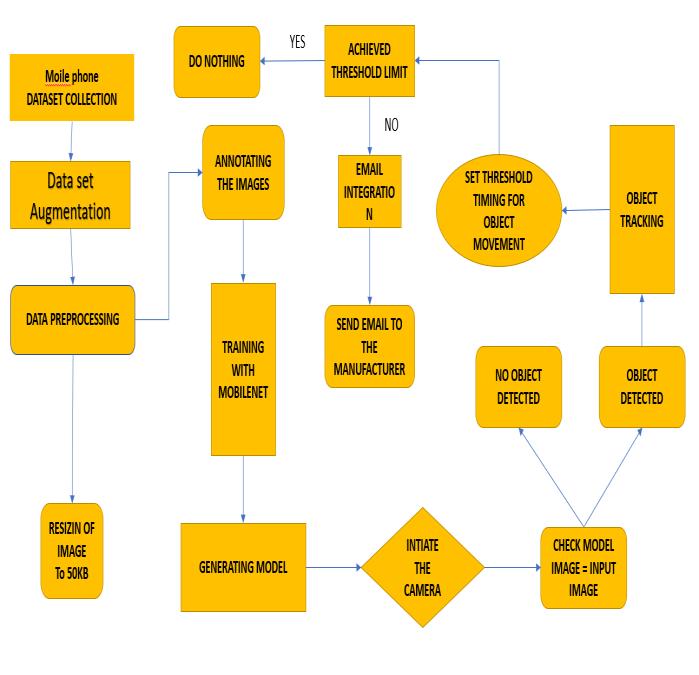
International Journal of Electrical and Electronics Research ISSN 2348-6988 (online) Vol. 9, Issue 2, pp: (9-18), Month: April - June 2021, Available at: www.researchpublish.com
C. Training the Mobile-net algorithm
SSD (Single Shot MultiBox Detector) is a popular algorithm in object detection. It‘s generally faster than Faster RCNN.

In this post, I will give you a brief about what is object detection, what is tensorflow API, what is the idea behind neural networks and specifically how SSD architecture works. The SSD model has detected mobile phone, laptop, coffee, glasses in a single shot. It detects different objects in a single shot. The SSD architecture is a single convolution network that learns to predict bounding box locations and classify these locations in one pass. Hence, SSD can be trained end-to-end. The SSD network consists of base architecture (Mobile-Net in this case) followed by several convolution layers.
By using SSD, we only need to take one single shot to detect multiple objects within the image, while regional proposal network (RPN) based approaches such as R-CNN series that need two shots, one for generating region proposals, one for detecting the object of each proposal.
Thus SSD is much faster compared with two shot RNN-based approaches. After going through a certain of convolutions for feature extraction, we obtain a feature layer of size m×n (number of locations) with p channels, such as 8×8 or 4×4 above. And a 3×3 conv is applied on this m×n×p feature layer. For each location, we got k bounding boxes
Fig. 2 Mobile-Net SSD architecture
These k bounding boxes have different sizes and aspect ratios. The concept is, maybe a vertical rectangle is more fit for human, and a horizontal rectangle is more fit for car. For each of the bounding box, we will compute c class scores and 4 offsets relative to the original default bounding box. Thus, we got (c+4) kmn outputs. That‘s why the paper is called ―SSD: Single Shot MultiBox Detector‖
D. Object detection
It is a process of finding all the possible instances of real-world objects, such as human faces, flowers, cars, etc. in images or videos, in real-time with utmost accuracy. The object detection technique uses derived features and learning algorithms to recognize all the occurrences of an object category.
Object detection technique helps in the recognition, detection, and localization of multiple visual instances of objects in an image or a video. It provides a much better understanding of the object as a whole, rather than just basic object classification. This method can be used to count the number of instances of unique objects and mark their precise locations, along with labelling. With time, the performance of this process has also improved significantly, helping us with real-time use cases. All in all, it answers the question: ―What object is where and how much of it is there? The technical evolution of object detection started in the early 2000s and the detectors at that time. They followed the low-level and mid-level vision and followed the method of ‗recognition-by-components‘.
International Journal of Electrical and Electronics Research ISSN 2348-6988 (online)
Vol. 9, Issue 2, pp: (9-18), Month: April - June 2021, Available at: www.researchpublish.com
Things did not go well and then machine detection methods started to come into the picture to solve this problem. Multiscale detection of objects was to be done by taking those objects into consideration that had ―different sizes‖ and ―different aspect ratios‖.
This was one of the main technical challenges in object detection in the early phases. But, after 2014, with the increase in technical advancements, the problem was solved. This brought us to the second phase of object detection, where the tasks were accomplished using deep learning.
E. Object tracking
Object tracking is a discipline within computer vision, which aims to track objects as they move across a series of video frames. Objects are often people, but may also be animals, vehicles or other objects of interest, such as the ball in a game of soccer. Below are impressive results achieved by SORT, a deep learning object tracking algorithm.
Object tracking has many practical applications including surveillance, medical imaging, traffic flow analysis, selfdriving cars, people counting and audience flow analysis, and human-computer interaction. Technically, object tracking starts with object detection identifying objects in an image and assigning them bounding boxes. The object tracking algorithm assigns an ID to each object identified in the image, and in subsequent frames tries to carry across this ID and identify the new position of the same object.
There are two main types of object tracking:
Offline object tracking: object tracking on a recorded video where all the frames are known.
Online object tracking: object tracking done on a live video stream. For example- a surveillance camera. This is more challenging because the algorithm must work faster and it is not possible to take future frames and combine them into the analysis.
F. Steps for sending e-mail using raspberry pi
Setting up the raspberry pi module- connect the power cable and LAN cable to raspberry pi then create WIFI hotspot and connect with it.
After then open the terminal window on Pi. Then, open the putty software and paste the host name or IP address. We need to update the Raspberry Pi. So, install the latest packages by using the below command.
Then use the following command- echo ―hello‖ mail- ―test‖ xyz@gmail.com. This command specifies the content, subject of the mail, as well as the mail id to which the mail will be delivered.
Then we used to create a new file in the python and this can be done by using the following commandnano newmailing.py
Allowing Gmail SMTP Access for Accounts with Standard Authentication. To allow access to Gmail‘s SMTP server from your app
Login to the Gmail account and check the mail, if everything works correctly then a mail will be delivered to the mentioned mail id. An overall flow of the working can be seen in the figure below
III. CONCLUSION
A. Dataset collection
It begins with, testing of the trained model, after that we can split our project into two modules that is object detection and object tracking. Dataset collection involves in the process of collecting different types of cell phone images. The data is been collected from various source.
After collecting the data, it goes through augmenting data where it will crop, tilt and do other steps to get the perfect picture of the data. Next it will pre-process the data in order to reduce the image size and to get only the image of cell phone and nothing else.
International Journal of Electrical and Electronics Research ISSN 2348-6988 (online) Vol. 9, Issue 2, pp: (9-18), Month: April - June 2021, Available at: www.researchpublish.com
Fig. 3 dataset collection

B. Pre-processing
In data pre-processing we are using two steps in order to eliminate excess storage space. The two methods are image resizing annotating the image.
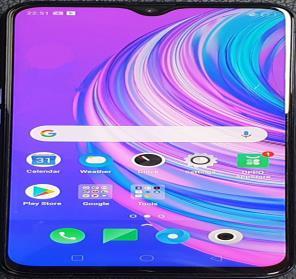

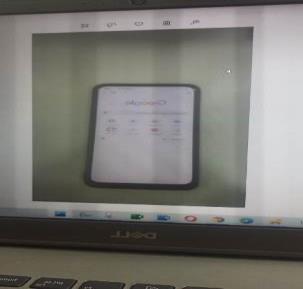
By using python Anaconda software, the image resizing and image annotating is been done. The below image will show the resizing the image. Since the data ae=re from different website like Kaggle and data-world, the image will be in different size hence we are using this step to make all the data in same size

Fig. 4 Before Resizing
Fig. 5 After Resizing
The next step is data pre-processing, in this phase the images collected are set to standard resolution format. The below image shows the data image before pre-processing and after pre-processing. By doing this step we can eliminate unwanted layers in the image.
Fig. 6 Before Annotating
Fig. 7 After Annotating
International Journal of Electrical and Electronics Research ISSN 2348-6988 (online) Vol. 9, Issue 2, pp: (9-18), Month: April - June 2021, Available at: www.researchpublish.com
With the use of mobile-net algorithm we are able to achieve 90 percent of accuracy in it. After this image are loaded for training where I train the dataset with mobile-net to generate the model file for further process.
Fig. 8 accuracy of the algorithm

The next step is to allot timing for each workstation. For the work station 1, the time limit has been kept to 10 seconds, for the station 2 the limit is 20 seconds and for the station 3 the limit is 30 seconds. If the coming products is been in a particular station for more than giving timing time then a automatic e-mail will be sent to the manager of that particular station mentioning that the work has not been completed in this station.
C. Live video streaming
After training the data with the algorithm, the trained model will be generated to the system and if the camera starts streaming it will detect the object and if the data is matched with the input data, then it will start capturing.
Fig. 9 Model Loading
Now the real time implementation, the camera is initiated in the next step, then the video is been spliced into three workstation and the blow screenshot shows the video frame without any object detected at any workstation.
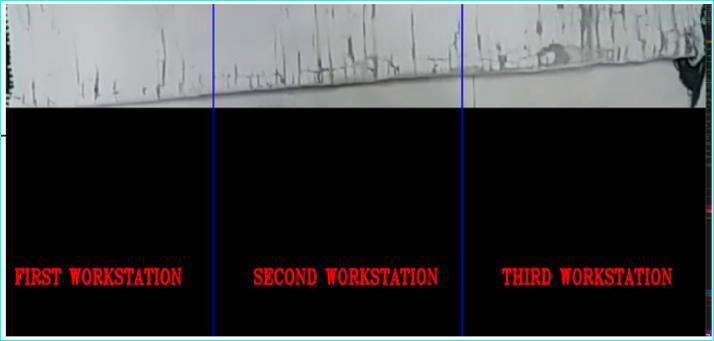
Fig. 10 video frame
As soon as the object detected in the workstation it will start capturing the object and it will track the object. The below images represent, if the object enter into a station, it will start capturing and the time will be noted down and if there is any delay occurring in the station, then a message and at the end of all the station a mail will be sent to the manufacturer.

International Journal of Electrical and Electronics Research ISSN 2348-6988 (online) Vol. 9, Issue 2, pp: (9-18), Month: April - June 2021, Available at: www.researchpublish.com
Fig. 11 Object Detection at First Workstation
Fig. 12 Object Detection at Second Workstation

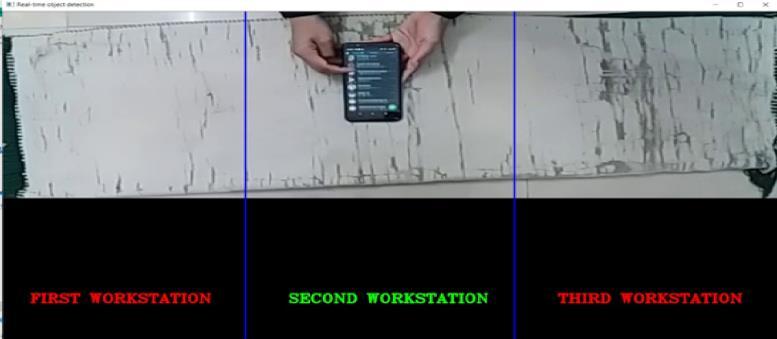

Fig. 13 Object Detection at Third Workstation
At the end of each station a message will be sent to the manufacturer only if there is any delay in that station. The below image will show that, in the station 2 the delay has been occurred message sent to the manufacturer.
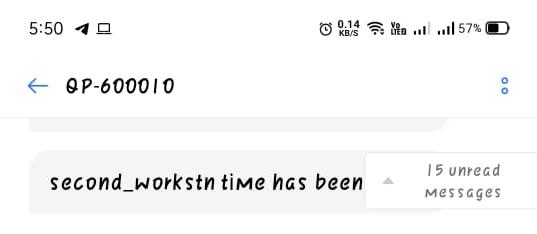
Fig. 14 second workstation SMS
And at the end of all station a e mail will be generated and it will be sent to manufacturer mentioning the time delay in each station.
International Journal of Electrical and Electronics Research ISSN 2348-6988 (online) Vol. 9, Issue 2, pp: (9-18), Month: April - June 2021, Available at: www.researchpublish.com
Fig. 15 Excel copy of the Report
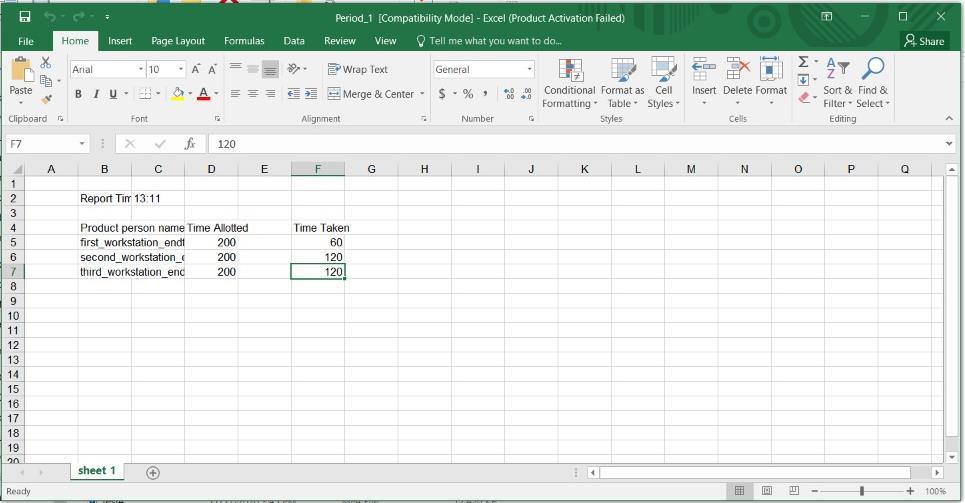
D. Comparision between existing system and proposed system
In the existing system, object re-identification is performed to improve the tacking performance. By this system only vehicle and pedestrian object tracking can be done. This system cannot perform multiple object tracking. Pixel wise object tracking is not done which may lead to mismatch tracking. In the proposed system, I have overcome the disadvantage of the existing system by the implementation of the project using mobile-net SSD algorithm for improving the accuracy of the system. The proposed system ensures perfect and automated monitoring in the manufacturing sector. By doing this the efficiency and robustness will increase and the performance of the output.
Table. 1 comparison between existing system and proposed system
FACTORS EXISTING SYSTEM PROPOSED SYSTEM ALGORITHM Fast region based convolution neural network (FRCNN)
MOBILE-NET ACCURACY Very low compared to other state-of-art methods
OBJECT DETECTION & TRACKING
The method makes use of primitive algorithms
Has very high accuracy
The method makes use of Mobilenet SSD for object detection & tracking
COST The system is very expensive. The system is cheap and effective.
APPLICATION The method is not applicable only for multiple object tracking.
The method is applicable in industrial and production spaces.
International Journal of Electrical and Electronics Research ISSN 2348-6988 (online) Vol. 9, Issue 2, pp: (9-18), Month: April - June 2021, Available at: www.researchpublish.com
Fig. 16 Hardware set up to Improve Efficiency in Manufacturing Industry
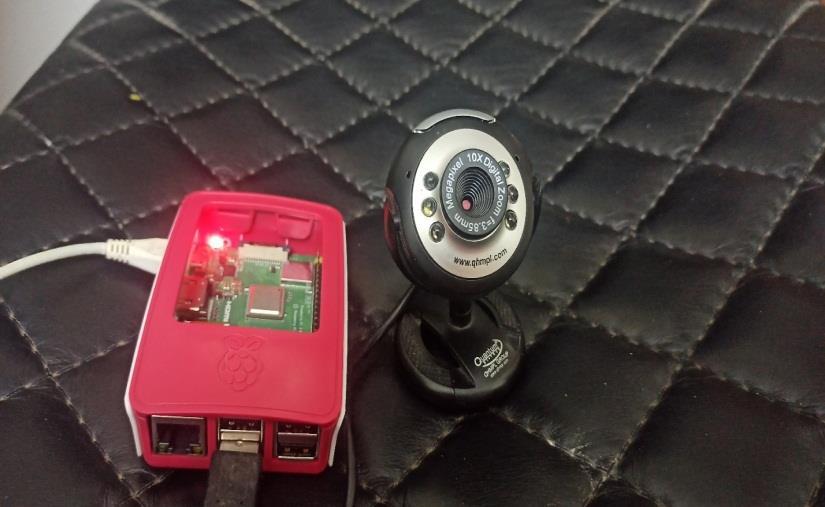
E. Conclusion
In this proposed study, efficiency of a manufacturing industry has been achieved by using deep learning and convolution neural network method which will automatically detect object in a station and check whether the input object data matches with model data, if the condition satisfies then it will initiate camera and start recording and tracking the object, simultaneously it will note down the time taken for each object to complete in that station. This project is successfully implemented for effective monitoring of work states in the manufacturing sector using the deep learning approach. This project is very helpful in reducing the burden on the management of constant monitoring and also any possibility in human error is removed.
F. Future work
In the coming future, we review the application of the production technology in the manufacturing field and it can promote for advance the manufacturing technology with more accuracy. In this field, there are more chance to develop or convert this project in many ways. Thus, this project has an efficient scope in coming future where this idea can be converted to computerized production in a cheap way. Deep Learning is a game-changing technology for any industry. As the technology matures and costs drop, DL is becoming more accessible for companies. In manufacturing, it can be effective at making things, as well as making them better and cheaper. The manufacturing industry has always been eager to embrace new technologies and doing so successfully. Now, with DL adoption, they are able to make rapid, data-driven decisions, optimize manufacturing processes, minimize operational costs, and improve the way they serve their customers. This doesn‘t mean that manufacturing will be taken over by the machines. DL is now an augmentation to human work and nothing can be a substitute of human intelligence and the ability to adapt to unexpected changes.
REFERENCES
[1] Multi-Stream Siamese and Faster Region-Based Neural Network for Real-Time Object Tracking, Yi Liu, Liming Zhang , Member, IEEE, Zhihui Chen, Yan Yan , Member, IEEE, and Hanzi Wang , Senior Member, IEEE [2020, Vol No:1524-9050]
[2] PlanningVis: A Visual Analytics Approach to Production Planning in Smart Factories, Dong Sun, Renfei Huang, Yuanzhe Chen, Yong Wang, Jia Zeng, Mingxuan Yuan, Ting-Chuen Pong, and Huamin Qu [IEEE 2020]
[3] Object Detection in High Resolution Remote Sensing Imagery Based on Convolutional Neural Networks With Suitable Object Scale Features, IEEE Peng Tang, Chunyu Wang, Xinggang Wang, Wenyu Liu, Wenjun Zeng, and Jingdong Wang [2019, Vol No: 0196-2892 ].
[4] Deeply Supervised Salient Object Detection with Short Connections, Qibin Hou, Ming-Ming Cheng, Xiaowei Hu, Ali Borji, Zhuowen Tu, Philip H. S. Torr [2018, Vol. No: 0162-8828].
[5] Spatio-temporal Gaussian Process Models for Extended and Group Object Tracking with Irregular Shapes, Waqas Aftab, Roland Hostettler, Member, IEEE, Allan De Freitas, Mahnaz Arvaneh, and Lyudmila Mihaylova, Senior Member, IEEE
International Journal of Electrical and Electronics Research ISSN 2348-6988 (online) Vol. 9, Issue 2, pp: (9-18), Month: April - June 2021, Available at: www.researchpublish.com
[6] Weakly Supervised Object Detection via Object-Specific Pixel Gradient, Yunhang Shen, Rongrong Ji , Senior Member, IEEE, Changhu Wang, Senior Member, IEEE,Xi Li, and Xuelong Li , Fellow, IEEE [IEEE 2018, Vol .No.: 2162-237X].
[7] Wang, Q.; Wan, J.; Yuan, Y. Locality Constraint Distance Metric Learning for Traffic Congestion Detection. Pattern Recognition. 2018, 75, 272–281.
[8] W. Samek, A. Binder, G. Montavon, S. Lapuschkin, and K.-R. Müller, ―Evaluating the visualization of what a deep neural network has learned,‖ IEEE Trans. Neural Netw. Learn. Syst., vol. 28, no. 11, pp. 2660–2673, Nov. 2017.
[9] A. Krizhevsky, I. Sutskever, and G. E. Hinton, ―Imagenet classification with deep convolutional neural networks,‖ in Adv. Neural Inform. Process. Syst., 2012, pp. 1097–1105
[10] J. Wang, H. Jiang, Z. Yuan, M.-M. Cheng, X. Hu, and N. Zheng, ―Salient object detection: A discriminative regional feature integration approach,‖ Int. J. Comput. Vis., vol. 123, no. 2, pp. 251–268, 2017, http://people.cs.umass edu/hzjiang/.
[11] Choi, J.; Chang, H.J.; Fischer, T.; Yun, S.; Lee, K.; Jeong, J.; Demiris, Y.; Choi, J.Y. Context-Aware Deep Feature Compression for High-Speed Visual Tracking. In Proceedings of the IEEE Conference on Computer Vision and Pattern Recognition (CVPR), Salt Lake City, UT, USA, 18–22 June 2018; pp. 479–488.
[12] J. Guo, T. Ren, L. Huang, X. Liu, M.-M. Cheng, and G. Wu, ―Video salient object detection via cross-frame cellular automata,‖ in Int. Conf. Multimedia and Expo, 2017, pp. 325–330.
[13] J. Lu, G. Wang, P. Moulin, Localized multifeature metric learning for image-set-based face recognition, IEEE Transactions on Circuits and Sys295 tems for Video Technology 26 (3) (2016) 529–540.
[14] Z. Huang, R. Wang, S. Shan, X. Chen, Face recognition on large-scale video in the wild with hybrid euclidean-andriemannian metric learning, Pattern Recognition 48 (10) (2015) 3113–3124.
[15] K. Q. Weinberger, L. K. Saul, Distance metric learning for large margin nearest neighbor classification, Journal of Machine Learning Research 10 (2009) 207–244
[16] J. Hu, J. Lu, Y.-P. Tan, Discriminative deep metric learning for face verification in the wild, in: Proceedings of the IEEE Conference on Computer Vision and Pattern Recognition, 2014, pp. 1875–1882.
[17] L. Wang, W. Ouyang, X. Wang, and H. Lu. STCT: Sequentially training convolutional networks for visual tracking. In CVPR, 2016. 1, 2
